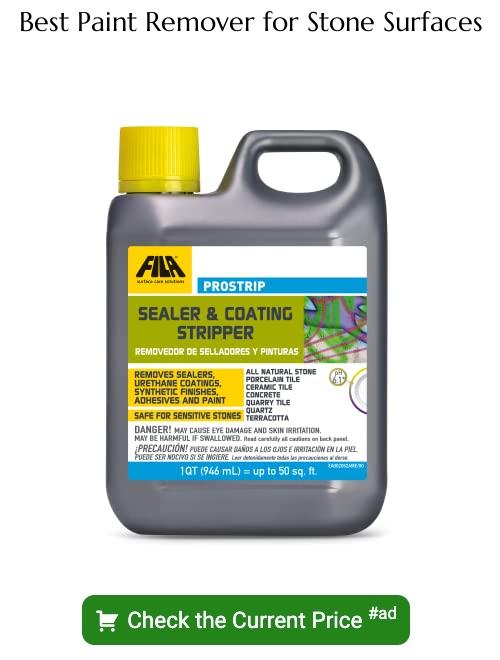Last updated on
Unleashing the authentic beauty of a stone surface gets straightforward because this comprehensive guide walks you through the process of efficiently removing paint from stone without causing any damage.
Key takeaways:
- Prioritize personal safety and consider stone type before removing paint.
- Identify the type of paint and stone for proper removal technique.
- Prepare the work area and wear protective gear for safe paint removal.
- Use natural and water-based methods or chemical removers for efficient paint removal.
- Clean and neutralize the stone surface after removing paint to maintain its appearance.
Safety Precautions and Initial Considerations
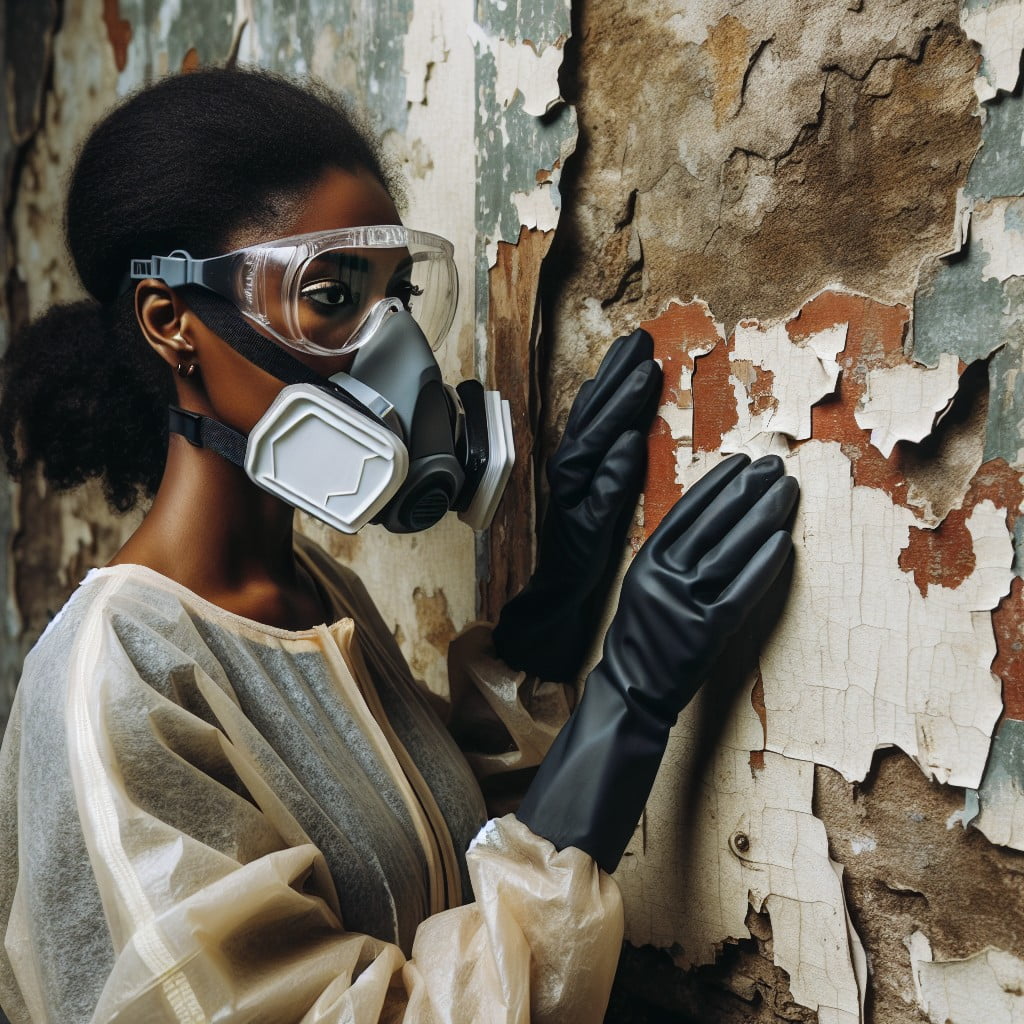
Before diving into the task of removing paint from stone, prioritize personal safety. Ensure you wear protective gear such as gloves, safety glasses, and, for certain methods, a respirator to guard against inhaling fumes.
Moreover, work in a well-ventilated area, especially when using chemical strippers, as they can emit hazardous vapors.
Understanding the type of stone is equally important. Some stones are porous and sensitive to chemicals, which means using harsh substances could cause damage.
Always test your chosen paint removal method on a small, inconspicuous area of the stone to check for any adverse reactions before proceeding with the full application.
Additionally, consider the age and historical value of the stone surface. Antique or culturally significant stonework might require consultation with a conservation expert to avoid damaging the substrate.
Lastly, plan the disposal of used chemicals and paint waste in advance, following local regulations to minimize environmental impact.
Types of Paint and Stone Identification
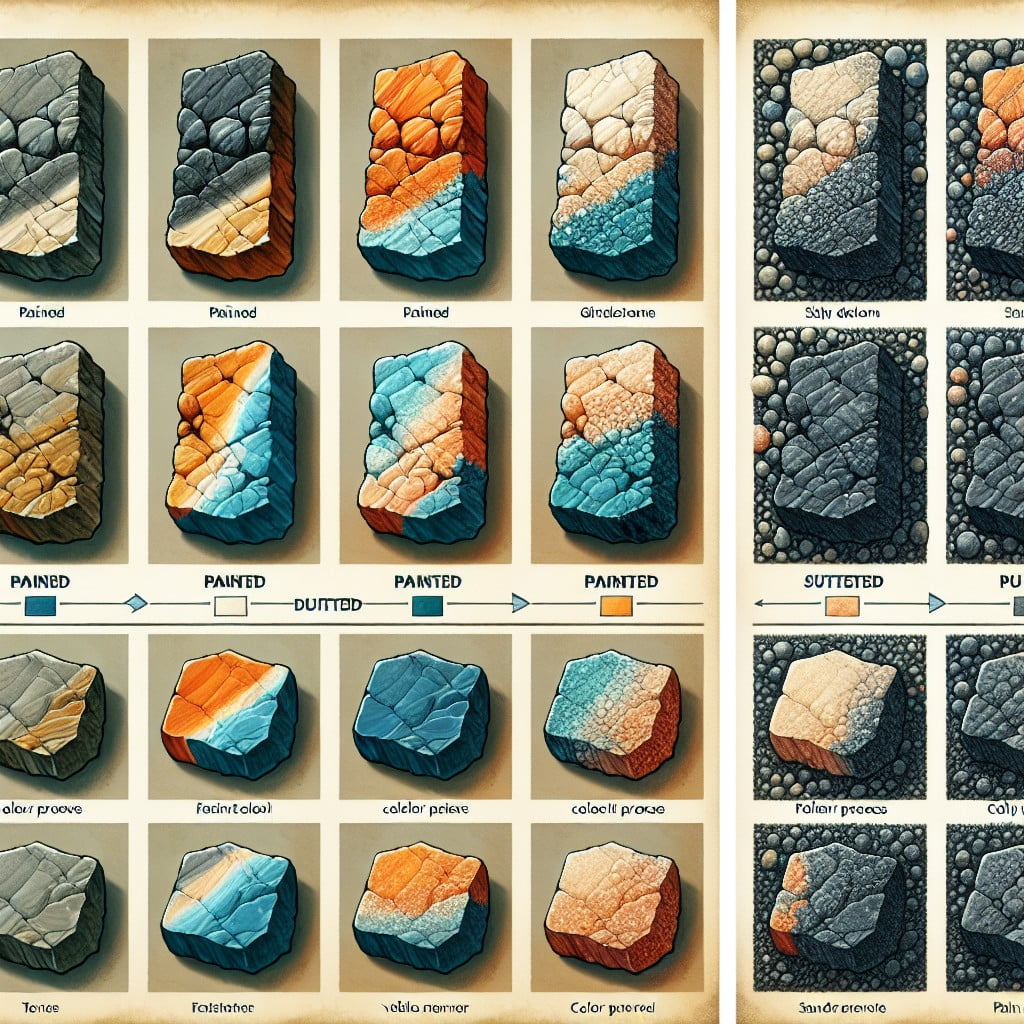
Identifying the type of paint on your stone surfaces is essential for selecting the appropriate removal technique. Common paint types include water-based, such as latex or acrylic, and oil-based variants. Water-based paints are usually easier to remove and often respond well to soaking and gentle scrubbing, while oil-based paints may require stronger solvents.
Equally important is understanding the nature of the stone. Softer stones like limestone or sandstone are porous and can be easily damaged. In contrast, granite and slate are denser and less susceptible to scratching. Knowing the characteristics of your stone ensures that the chosen removal method both effectively strips the paint and preserves the integrity of the stone. Always test your chosen method on a small, inconspicuous area to gauge its impact before proceeding with full-scale paint removal.
Preparation of Work Area and Protective Measures
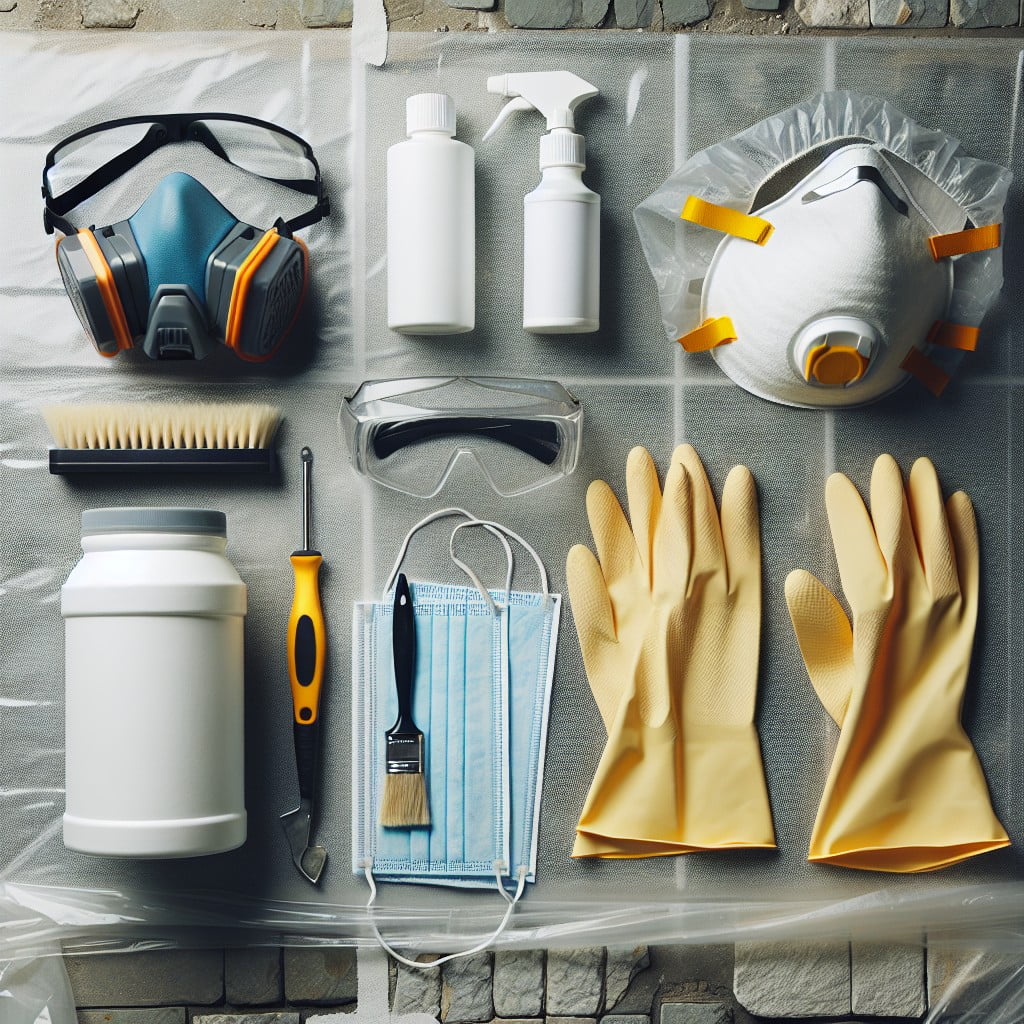
Before embarking on the task of stripping paint from stone, taking the necessary precautions to safeguard your surroundings and well-being is essential. Start by clearing the area of any furniture, decorations, or movable items to avoid accidental damage. Lay down drop cloths or plastic sheeting to protect adjacent flooring and collect any paint debris.
Ensure good ventilation if you’re working indoors by opening windows or using fans, especially when using chemical removers, as these can emit harmful fumes. Always wear protective gear, including gloves, safety goggles, and a face mask. Choosing the right type of gloves is crucial — nitrile gloves for chemical resistance or heavy-duty rubber gloves for manual scraping.
Lastly, keep a clean water source and neutralizing agents handy for immediate clean-up if required. This preparation not only eases the overall process but also ensures a safer work environment.
Natural and Water-Based Paint Removal Methods
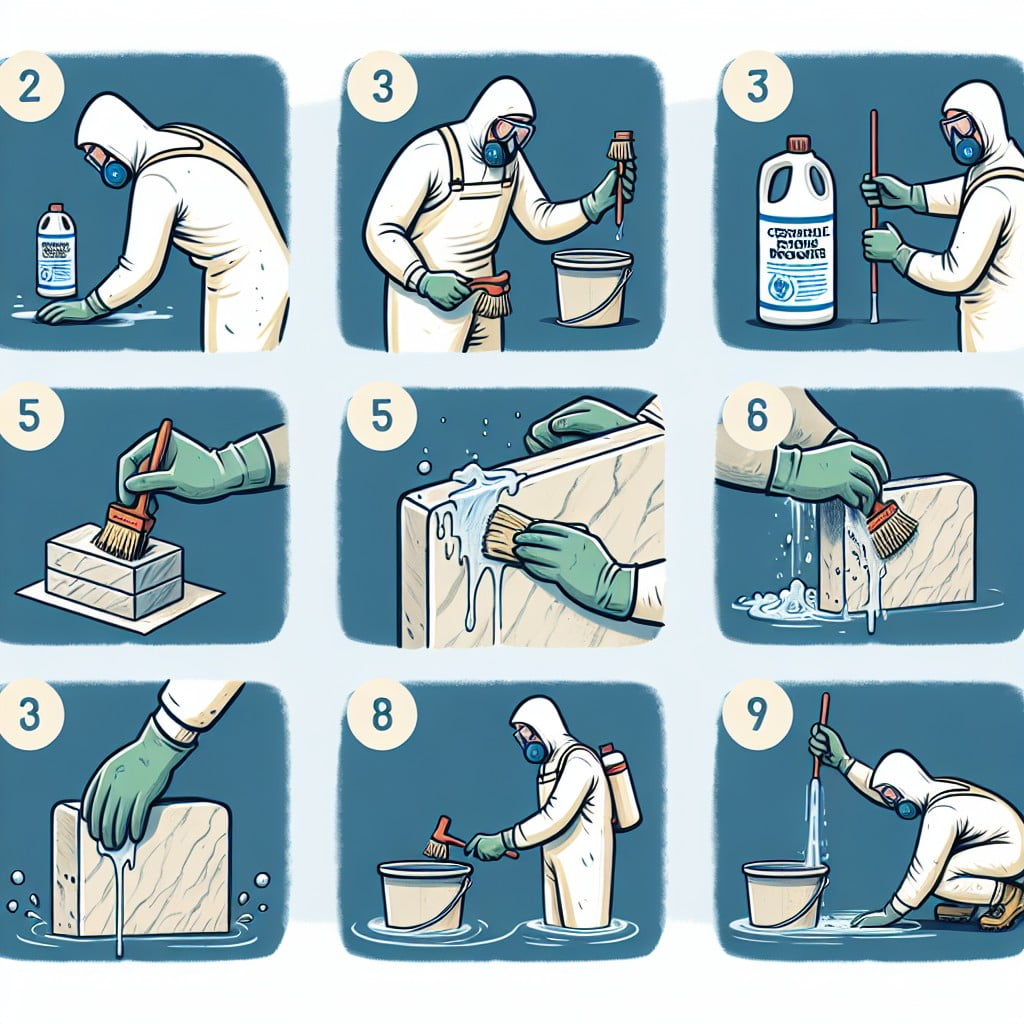
For an eco-friendlier approach or when dealing with water-based paints, consider these gentle yet effective removal methods:
- Soapy Water and Baking Soda: Create a mixture of soapy water and baking soda to make a mild abrasive paste. Apply the paste to the paint-stained area and gently scrub with a soft-bristle brush. This method loosens the paint without damaging the stone.
- Vinegar: Heat white vinegar and apply it to the painted area. The acidic nature of vinegar helps break down water-based paints. Once the vinegar has had time to work, scrape off the paint carefully with a plastic putty knife.
- Steam Stripping: A steam stripper can soften water-based paint without chemicals. Use it over the painted stone surface to enable easier paint removal.
- Poultice: Create a poultice with absorbent material and a solvent like water or acetone, tailored to the paint type. Apply the poultice to draw out the paint from porous stone surfaces.
These methods prioritize the stone’s integrity while maximizing paint removal effectiveness. For tougher paint stains, you may need to explore chemical removers or professional assistance.
Chemical Paint Removers Selection and Usage
Selecting the correct chemical paint remover is crucial to effectively strip paint from stone without damaging the substrate. Look for products specifically designed for stone surfaces and ensure they are suitable for the paint type you are dealing with. Always read the manufacturer’s instructions and heed all safety warnings.
Start by applying a small amount of the chemical remover to a discreet area of the stone to test for any adverse reaction. If the stone remains unharmed, proceed with a larger application, using a paintbrush or spray bottle for even distribution. Allow the remover to sit for the recommended duration—usually between 15 to 30 minutes—until the paint begins to bubble and loosen.
Once the paint has softened, use a plastic scraper to gently lift the paint from the stone. Refrain from using metal tools that could scratch the stone surface. For stubborn areas, apply a second coat of the remover, but avoid leaving the product on for longer than suggested to prevent stone discoloration or etching.
After removing the paint, it is imperative to thoroughly wash the stone with a neutralizing solution or clean water to remove any remaining chemical residue. This step ensures that the stone’s natural beauty is restored without long-term damage from the paint remover.
Remember that ventilation is key when working with chemical paint removers, so keep your work area well-ventilated to avoid inhaling noxious fumes. Use protective gear, including gloves, eyewear, and a mask, as personal safety should never be compromised during this process.
Manual and Mechanical Abrasive Techniques
Start by selecting the appropriate manual tools, like scrapers or wire brushes, ensuring they’re not too abrasive to damage the stone. Begin with gentle pressure to gauge how the stone reacts and increase carefully as necessary. When handling these tools, use consistent, light strokes to lift the paint without gouging the stone.
For larger areas or tougher jobs, mechanical methods may be more efficient. Sandblasting or using a pressure washer are options, but they require a practiced hand to prevent stone erosion. If opting for a pressure washer, choose a low-pressure setting to start. Always test on a small, inconspicuous area to ensure the stone can handle the method chosen.
Regardless of the approach, maintain a steady hand and an attentive eye to adapt your technique based on the response of the stone surface. Be patient; removing paint mechanically is often about persistence rather than force.
Cleaning and Neutralizing Stone After Paint Removal
Once the bulk of the paint has been removed, residue might remain, necessitating a thorough cleaning to restore the stone’s natural appearance. Start by gently washing the surface with a mixture of warm water and a mild detergent. Use a soft-bristled brush to loosen any remaining paint particles without scratching the stone.
After cleaning, neutralize the stone to ensure no chemical paint remover residue affects the stone’s porosity. A solution of baking soda and water is effective for neutralizing acids, while a mild vinegar solution can counteract any alkaline residues. Apply the neutralizing agent with a sponge, covering the entire area where chemical removers were used. Allow the solution to sit for a few minutes, then rinse the stone thoroughly with clean water.
Finally, allow the stone to dry completely. This step is crucial as trapped moisture can cause long-term damage or create conditions for mold growth. If needed, use a gentle, absorbent cloth to dab excess moisture before leaving the stone to air-dry.
Paint Waste Disposal and Cleanup
Proper disposal of paint waste is crucial to protect the environment and comply with local regulations. Follow these guidelines for safe cleanup:
1. Collect all paint residue, chips, and dust using a vacuum with a HEPA filter to prevent particles from dispersing into the air.
2. Sealable containers should be used to store the collected waste. Ensure that the containers are labeled according to the type of paint waste inside.
3. Never pour paint solvents or remnants down the drain or onto the ground as they can contaminate water sources and soil.
4. Check with your local waste management facility for guidelines on disposing of hazardous materials. Many areas offer designated drop-off times for such waste.
5. For cleaning tools and brushes, use a solvent appropriate for the type of paint you’ve removed. If possible, do this in a well-ventilated area and wear gloves to protect your skin.
6. After all waste is safely disposed of, thoroughly wash the stone surface with water to remove any remaining cleaning agent or paint remover.
By carefully adhering to these steps, you can ensure a clean work area and responsible disposal, safeguarding both your health and the environment.
When to Call a Professional for Paint Removal
Tackling a paint removal project from stone surfaces can often be managed DIY, but certain scenarios warrant the expertise of a professional:
- Heritage Preservation: If the stone is part of a historic building or monument, special care is needed to preserve its integrity.
- Chemical Uncertainty: Professionals are equipped to handle potentially hazardous chemicals that may be required for some types of paint removal.
- Extensive Damage: For stone surfaces that are deeply etched or damaged by paint, professionals can employ restoration techniques that go beyond simple removal.
- Large Scale Projects: A professional team can more efficiently handle larger areas, which might be overwhelming for an individual.
- Safety Concerns: If the project requires working at heights or using heavy machinery, a professional is better suited for safe execution.
Engaging a professional ensures that the paint removal process is not only effective but also preserves the beauty and longevity of the stone. When in doubt, consulting with an expert can provide peace of mind and guarantee the best outcome for your stone surfaces.
Maintenance of Stone Surfaces Post Paint Removal
After successfully removing paint from stone surfaces, maintaining the integrity and appearance of the stone is critical. Here are some practical tips to ensure your stone surfaces remain in excellent condition:
1. Seal the Stone: Apply a stone sealer to provide a protective barrier against stains and erosion, especially for porous stones like limestone or sandstone.
2. Regular Cleaning: Gently clean the stone with pH-neutral cleaners to avoid damaging the surface. Avoid acidic or abrasive cleaners that can etch or scratch the stone.
3. Prompt Stain Removal: In case of spills, act quickly to blot the substance before it penetrates the stone. Always blot rather than wipe to prevent spreading the stain.
4. Avoid Harsh Chemicals: Keep the stone away from harsh chemicals and cleaners that can strip sealers or damage the stone’s natural finish.
5. Inspect Regularly: Regularly check for any signs of damage or wear. Early detection of issues such as cracks or chips will allow for timely repairs, preserving the longevity of the stone surface.
Implementing a consistent maintenance routine will keep stone surfaces looking pristine and extend their lifespan, negating the need for frequent extensive cleaning or restoration efforts.
FAQ
Is there a way to remove paint from stone?
Yes, paint can be removed from stone using a chemical stripper that is suitable for stone surfaces.
Does vinegar remove paint from stone?
No, vinegar is not recommended for removing paint from stone as its acidity may dissolve the stone.
Does paint come out of stone?
Yes, paint can be effectively removed from stone using specialized products like stone strippers.
How do you get paint off of a rock?
To remove paint from a rock, one method includes utilizing a cotton swab dipped in nail polish remover, rubbing it on the painted area in a circular motion until the paint starts to break down and then gently wiping it off with a paper towel.
Can chemical strippers effectively remove paint from stone surfaces?
Yes, chemical strippers can effectively remove paint from stone surfaces.
Is it possible to use sandblasting as a method to eliminate paint from stone?
Yes, sandblasting can be effectively used to eliminate paint from stone.
What is the role of a pressure washer in removing paint from stone structures?
A pressure washer plays a pivotal role in removing paint from stone structures by utilizing high-pressure water spray to dislodge paint, allowing for effective and efficient cleaning without damaging the underlying stone surface.
Recap:
